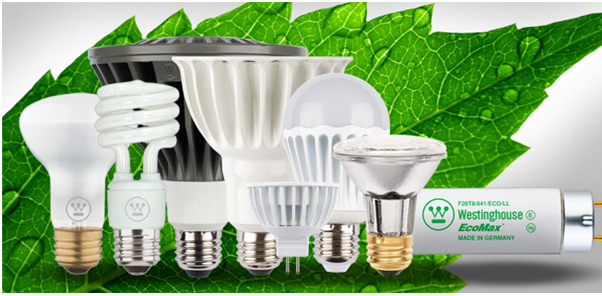Environmentally Friendly Lighting for Your Home
There are quite a few lighting options for those who wantto make their homes greener and more environmentally friendly. We will take a look at some of the best and most commonly used ones and see how they compare to traditional lighting methods.
CFLs
Compact Fluorescent Lights, or CFLs, are those twisty light bulbs that give off very bright light. They can actually come in quite a few shapes, but they are most easily recognized in their spiral form. The average CFL will keep working for around 10,000 hours. Compare that to traditional light bulbs (incandescent bulbs), which only last for about 1,000 hours.
So while the CFL bulbs do cost a bit more, you will easily save money on them over time. CFLs also emit less heat than their incandescent counterparts. So your house will stay cooler, and you will spend less on air conditioning in the summer months.
The only downside to these is that they do contain mercury, so you have to be careful about how you dispose of them. Many cities have a special program for CFLs, so check with yours to see what is offered as a safe method of disposal.
LEDs
Light emitting diodes, more commonly called LEDs, give off light consistently for as long as 40,000 hours. Now they are a bit more expensive than any other light bulb you can get, but they are also the longest lasting. By choosing LEDs, you cut down on the amount of waste going in to the environment and you can save quite a bit of money over time.
Another benefit of these bulbs is that they use very little energy. Studies show the average LED uses as much as 90% less energy than even a CFL. That can give you some serious energy savings. If you want to save on your energy bill, just changing out your light bulbs can be an effective first step. If you are worried about theinitial cost of these bulbs, you can take comfort in knowing that their cost is slowly declining. They may never reach the very low cost of incandescent bulbs, but they don’t need to in order to save you lots of money.
Save the Environment through Your Lighting.
There are other ways you can cut down on energy costs and ensure that your lighting methods are protecting the environment. One of the easiest ways to do that is to use natural lighting as much as possible. By opening windows and curtains instead of turning on a light, you will make your bulbs last longer and save yourself some money on your energy bill. Natural sunlight is also healthier for your skin, eyes and mental state.
If you have any power strips or wall warts that are plugged into the wall, be sure to unplug them when you aren’t using them. These can become warm even when they are not in use, which means that they are drawing power from your outlets even when you aren’t actively using them. This applies to power bricks for computers, laptops, chargers and video game consoles as well.
One of the old energy-saving standbys is to turn off lights when you are not using them. But do you know how long you need to be absent from a room to actually make turning off your lights worthwhile? It’s important to know since constantly turning on and off lights depletes their lifespan quickly.
So if you are using conventional incandescent bulbs, you should turn off the lights every time you leave the room, even if it is just for a few seconds. For CFLs, you can turn off the light if you plan to be absent from the room for more than a few minutes. And for LEDs, you wantto turn them offonly if you plan to be gone more than 15 minutes. For more information on LED bulbs and lighting visit Led hut.co.uk



0 Comments
Recommended Comments
There are no comments to display.